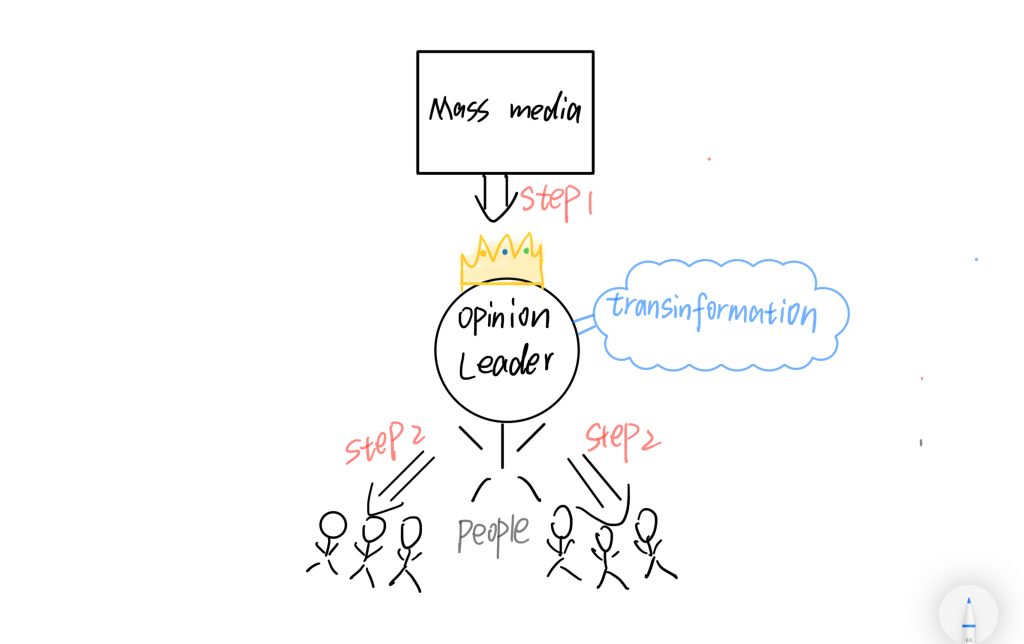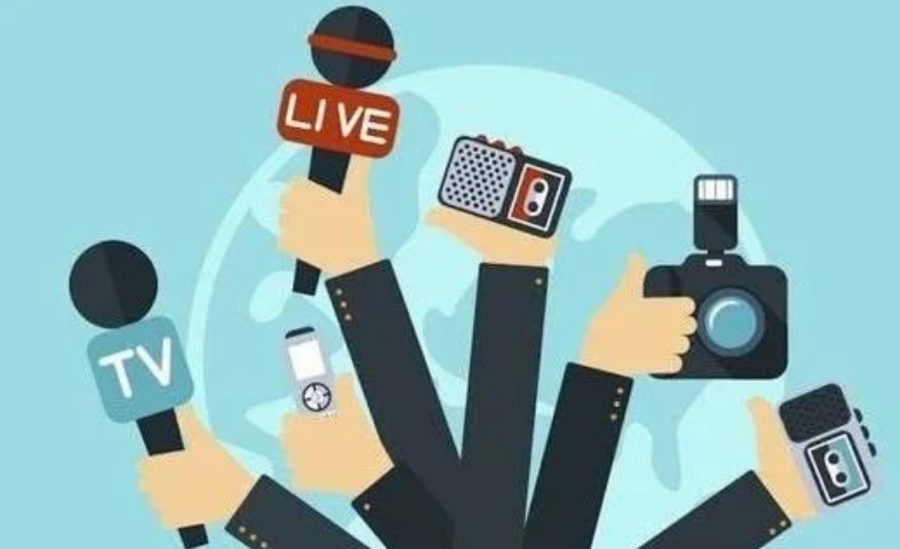
After I learned about the two-step flow theory, in my own words, information is first transmitted through mass media such as television, newspapers, radio to public figures, that is, the opinion leaders mentioned in the written text. Here, they deliver the message to ordinary people. At this point, there are two steps of information transfer, just like the diagram I drew above. It was proposed by Paul Lazarsfeld and Elihu Katz.
- The advantage of the two-step flow theory is that it is applicable to the current digital era. For example, brands often use social media platforms to promote products. Some bloggers and Internet celebrities with a large number of fans on the platforms are called opinion leaders, which will have a great influence on their followers. Not only that, the two-step flow theory can also amplify the impact of the message, such as a clear example seen in a previous post, which briefly stated: “When a celebrity supports a charity on TV, fans realize and contribute to the charity, expanding the reach and influence of the message.”
- Share a specific case’╝ÜRyan Kaji and his family have more than 38 million subscriber on YouTube, there are also accounts and videos about them on China’s Tiktok platform and are very influential opinion leaders. Their videos present unboxing sharing of toys, sharing of daily life trivia, publish some principles (the principles of lightning, the principles of thunderŌĆ”). Once it is popular, many brand advertisements will also cooperate with Ryan. People will receive different information through Ryan’s videos, and people will be influenced by him to buy items. At this time, both the brand and Ryan will have benefits, which perfectly reflects the two-step flow theory applicable to the current digital era.’╝łIn the image below, I have shown the video content of Ryan’s YouTube and Chinese Tiktok accounts’╝ē
- Although the two-step flow theory increases the impact of information, there are weaknesses. The two-step theory downplays the direct impact of media information on individuals, because information is not directly transmitted to people, but through the expression of opinion leaders, so that the audience can receive the information. In this process, opinion leaders will add their own ideas, so that the masses cannot fully and directly understand major events, and the masses themselves lack independent thinking and opinions on major events. Not only that, for the masses, opinion leaders may create a higher source of credibility than mass media on the same information. This is related to the personal relationship between opinion leaders and the masses (followers), which will cause the masses’ thoughts to be influenced by the opinion leaders and change their original thinking mode and understanding of information.
- The two-step flow theory attaches great importance to the role of opinion leaders, thus ignores the decision-making ability of individuals on information, and they play a passive role for the masses, which cannot reflect the complexity of human behavior.
- Lack of updating of the theory: The Times have moved on, but the theory was developed in the mid-20th century, and although it has been influential, the updating or revision of the theory has not fully kept up with modern society, which has resulted in it not being well adapted to the current changes in media and numbers.




I like the way you explained what the two- step theory is in your own words, it makes sense and the way you pointed out the advantages and disadvantages to the two- step flow theory. However, what I dislike is that you use bullet points, I think it should be an essay format and maybe use more pictures. Also with your definition of the two-step flow theory you couldŌĆÖve added some quotes from Lazarsfeld and then expanded on his points.
You did a great job explaining the core concepts of the two-step flow theory and showing its applicability with digital age examples, like Ryan Kaji’s influence. Your use of diagrams and specific cases helps visualize the information dissemination process and integrates theory with reality. You also accurately highlighted the theory’s value in the digital media environment. However, while the article mentions the theory’s neglect of individual agency, it could further analyze how audiences regain control over information through comments, likes, and shares in modern social media. Additionally, the limitations section could be strengthened by including specific negative cases, such as the spread of false information, to illustrate the challenges and risks of the two-step flow theory in the modern media environment. This would make the argument more profound and persuasive. Generally, this is a great sharing’╝ü